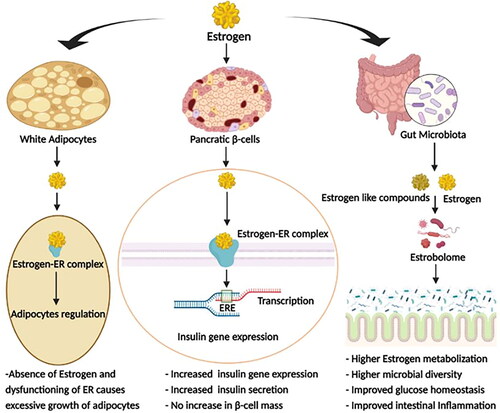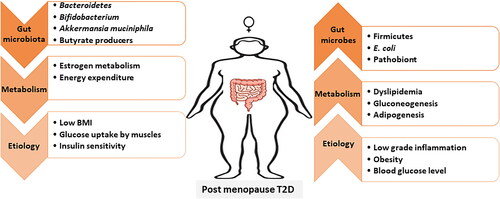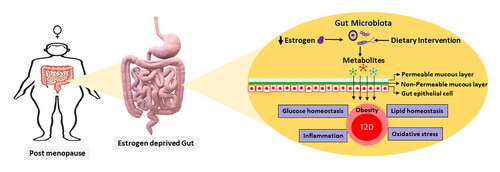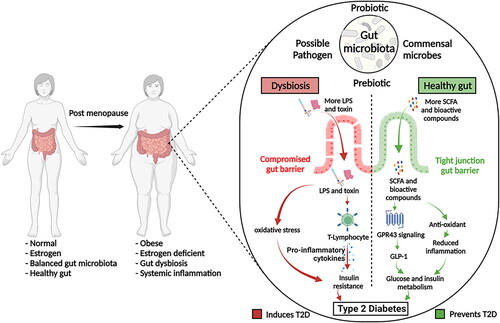Figures & data
Table 1. A summary of post-menopausal ailments.
Figure 1. Effect of estrogen; Estrogen affects various metabolic activities related to T2D, such as glucose metabolism, adiposity, systemic inflammation, etc., via its direct action and by involving gut-microbiota (ER = Estrogen receptor, ERE = Estrogen responsive element).

Figure 2. Impact of Post-menopausal Type 2 Diabetes; Post-menopausal type 2 diabetes affects the multiple regulators including gut microbiota to metabolism, and their impact can be seen on various T2D specific markers i.e., BMI, blood glucose level.

Table 2. Common gut associated adversities in post-menopausal women.
Table 3. Prebiotics and their role in T2D management in post-menopausal women.
Table 4. Probiotic strains used in previous studies and their roles against T2D (L. = Lactobacillus, B. =Bifidobacterium).
Table 5. Synbiotic administration used in different T2D studies (L.=Lactobacillus, B.=Bifidobacterium, S. = Streptococcus).


